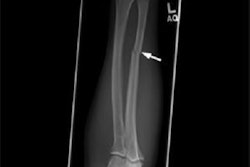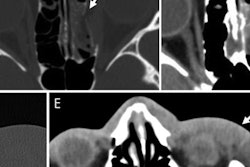CHICAGO - The under-the-radar problem of physical abuse of the elderly can be countered by radiologists who observe certain patterns of head and neck injuries, subdural hematomas, and the social context surrounding these cases, researchers reported at RSNA 2012.
Following a literature review that included 1,100 cases of abuse, lead researcher Dr. Kiernan Murphy, interim radiologist-in-chief at Toronto's University Health Network, and colleagues found that the elderly frequently present with injuries such as subdural hematoma; facial, periorbital, and laryngeal trauma; or dental issues such as loose teeth and mandibular fractures.
"Older people fall a lot, so it's important to try and distinguish between injuries that occur in a fall and injuries that are the result of abuse," he said at a press briefing.
"Caffey's [shaken baby] syndrome has been well-defined in radiology," Murphy said. "We don't have the equivalent in elders."
According to the literature, the radiologist should also consider the home life of the elderly patient:
- The patient may suffer from dementia and/or depression and be socially isolated except for his or her caregiver.
- The patient may have severe weight loss, bedsores, and signs of poor hygiene.
- The caregiver may be financially and/or emotionally dependent on the victim.
- The caregiver may have a history of alcohol or drug abuse and a history of mental illness or depression.
"Currently, elder abuse remains underreported, leading to an increase in morbidity and mortality from a delay in intervention," Murphy said. Physicians report only about 2% of suspected elder abuse cases due to the uncertainty of the validity of physical abuse, he said.
Murphy said he undertook the study to develop a set of patterns that could guide radiologists who see these abuse victims. The study's results encompass reports from 22 published papers.
In addition to the head and neck injuries, elder abuse victims often present with broken ribs and soft-tissue injuries to the chest, according to Murphy. They also present with humeral fractures and soft-tissue injuries to the upper extremities, reminiscent of so-called nightstick fractures.
"Radiologists and physicians in general need to be alert to this constellation of injuries and issues," he said.
Dr. Gary Whitman, professor of radiology at MD Anderson Cancer Center, who moderated the press briefing, added that "radiologists should be aware of these unusual constellations of injuries among the elderly. We need to become more active in society and not just act as 'film critics,' " he said.




















